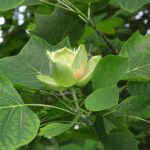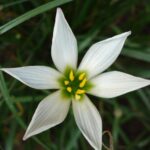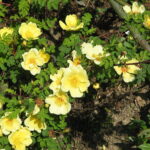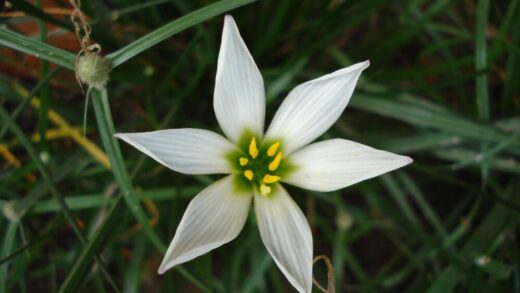Wintering forsythia
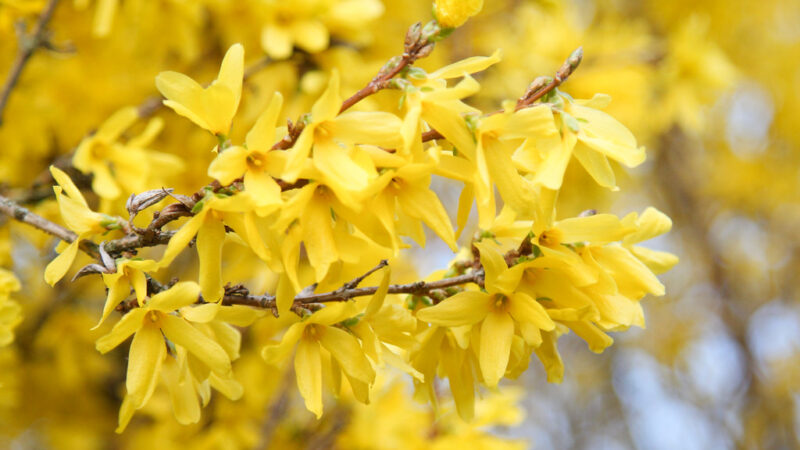
Ensuring your forsythia successfully navigates the challenges of winter is crucial for guaranteeing a spectacular burst of color come spring. Forsythia is renowned for its hardiness and ability to withstand cold temperatures, making it a reliable performer in a wide range of climates. However, taking a few preparatory steps in the autumn can help protect the plant from potential winter damage and ensure its flower buds remain viable and ready for their spring debut. Proper winter care is not about excessive coddling, but rather about providing the right conditions and protections to help the shrub endure the dormant season in optimal health.
The primary concern during winter is the protection of the flower buds, which form on the plant’s stems during the preceding summer and autumn. These buds are the promise of the following spring’s floral display. In regions with particularly harsh winters, extreme cold, drying winds, and heavy snow or ice can damage these buds, leading to a significant reduction in flowering. While the plant itself may be perfectly root-hardy and survive the winter without issue, the loss of its blooms can be a major disappointment for any gardener.
The process of preparing forsythia for winter begins well before the first frost. It involves adjusting your care routine in the autumn to signal the plant that it is time to slow down its growth and begin hardening off for dormancy. This includes ceasing fertilization and reducing supplemental watering. These simple actions help the plant’s tissues mature and become more resistant to the stresses of cold weather, forming a natural defense against the rigors of the coming season.
Ultimately, the goal of wintering forsythia is to minimize stress and protect the future blooms. From ensuring adequate hydration before the ground freezes to providing a protective layer of mulch, each step contributes to the shrub’s resilience. By understanding the specific challenges that winter presents, you can take simple yet effective measures to ensure your forsythia emerges from dormancy healthy, strong, and ready to put on its much-anticipated show.
Autumn preparation for dormancy
The transition from the active growing season to winter dormancy is a critical period for forsythia, and your care practices should reflect this change. One of the most important steps is to cease all fertilization by late summer. Applying fertilizer, especially those high in nitrogen, in the autumn can encourage a late flush of new, tender growth. This new growth will not have sufficient time to harden off before the first hard frost and will be highly susceptible to winter damage, which can create entry points for diseases and cause unnecessary stress to the plant.
More articles on this topic
Watering practices should also be adjusted in the autumn. While you should not let the plant go into winter completely dry, you should gradually reduce the frequency of supplemental watering as the weather cools and rainfall increases. This helps to signal the plant to slow its metabolic processes in preparation for dormancy. However, if you experience a particularly dry autumn, it is very important to give the forsythia a deep, thorough soaking a few weeks before the ground is expected to freeze solid. This ensures the roots are well-hydrated, which helps protect them from desiccation in cold, dry winter winds.
A crucial part of autumn preparation is garden cleanup. Raking up and disposing of fallen leaves from around the base of the forsythia is an important sanitation measure. This removes any overwintering fungal spores, such as those that cause leaf spot, reducing the likelihood of the disease reoccurring in the following spring. A clean garden bed also discourages pests, such as rodents, from nesting near the base of the shrub, where they might chew on the bark for a winter food source, causing significant damage.
It is vital to resist the temptation to prune your forsythia in the autumn. While it might seem like a good time to tidy up the garden, pruning forsythia at this time of year is a critical mistake. The flower buds for the next spring have already formed on the stems. Any pruning done in the fall or winter will remove these buds, directly resulting in a loss of flowers. All structural and maintenance pruning must be reserved for the period immediately after the shrub has finished flowering in the spring.
The role of mulch in winter protection
Mulching is a simple yet profoundly effective technique for protecting your forsythia during the winter months. After the first few light frosts but before the ground freezes solid, applying a layer of organic mulch around the base of the shrub provides numerous benefits. The primary function of this winter mulch is to insulate the soil and the plant’s root system. This helps to regulate the soil temperature, protecting the roots from the extremes of freezing and thawing cycles that can heave the plant out of the ground and damage root structures.
More articles on this topic
A layer of mulch approximately 7 to 10 centimeters thick is ideal. Good materials for winter mulch include shredded bark, wood chips, pine straw, or shredded leaves. These materials create a protective blanket over the root zone. It is important to pull the mulch back slightly from the main stems or trunk of the forsythia. Piling mulch directly against the bark can trap too much moisture, which can lead to rot and create a welcoming habitat for rodents and other pests that might gnaw on the stems during the winter.
In addition to temperature regulation, mulch also helps to conserve soil moisture. Winter can be a surprisingly dry time for plants, especially when the ground is frozen and precipitation falls as snow. Cold, dry winter winds can wick moisture from the stems and buds, a process known as desiccation. A good layer of mulch helps the soil retain the moisture from autumn rains, providing a reservoir for the roots to draw upon and helping to keep the entire plant better hydrated and more resistant to winter burn.
As an added bonus, the organic mulch will slowly break down over the course of the winter and spring. This process enriches the soil with valuable organic matter and nutrients, improving its structure and fertility for the upcoming growing season. This gentle, natural feeding process contributes to the overall health of the shrub, ensuring it has the resources it needs to produce vigorous new growth and a profusion of beautiful flowers when spring arrives.
Protecting flower buds in harsh climates
In colder climate zones, the survival of the forsythia shrub itself is rarely in question, but the viability of its flower buds can be a major concern. The buds that form in late summer are exposed to the full force of winter’s cold. Temperatures that dip well below -25°C can kill the flower buds, even on otherwise hardy varieties. This results in a frustrating phenomenon where the lower branches of the shrub, which were insulated by snow cover, flower beautifully, while the upper, exposed branches remain bare.
One of the most effective strategies for protecting flower buds is to choose the right variety of forsythia for your specific climate zone. Over the years, plant breeders have developed numerous cold-hardy cultivars that have flower buds capable of withstanding colder temperatures than older varieties. When purchasing a forsythia, look for varieties specifically rated for your hardiness zone, such as ‘Northern Gold’ or ‘Meadowlark’, which were bred for superior flower bud hardiness in cold climates. This initial selection can make a huge difference in your annual floral display.
For existing shrubs or in areas with unpredictable winter weather, providing a physical barrier can help protect the buds from harsh winds and extreme cold. You can create a simple shelter by driving stakes into the ground around the shrub and wrapping burlap or a commercial shrub wrap around the stakes. This creates a screen that deflects wind and can trap a layer of insulating air around the plant. It is important to leave the top open to allow for some air circulation and to prevent heat buildup on sunny winter days.
Another factor that influences bud hardiness is the plant’s location in your garden. Planting forsythia in a spot that is sheltered from the prevailing winter winds, such as on the leeward side of a building or an evergreen hedge, can provide significant protection. Avoid planting it in low-lying frost pockets where cold air tends to settle. By combining smart variety selection with strategic placement and, if necessary, physical protection, you can greatly increase the chances of enjoying a full and glorious display of forsythia blooms, even after a harsh winter.
Post-winter assessment and care
As winter loosens its grip and the first signs of spring emerge, it is time to assess your forsythia for any damage it may have sustained during the dormant season. Wait until the buds begin to swell and the threat of a hard frost has passed before you start any significant cleanup. A careful inspection will reveal the health of the stems and buds. Healthy stems will be pliable, and the buds will appear plump and full. Stems that are brittle, discolored, or shriveled are likely dead and will need to be removed.
The most common form of winter damage is tip dieback, where the very ends of the branches have been killed by the cold. This is primarily a cosmetic issue and is easily remedied. Once the shrub begins to leaf out, you can clearly see the line between the living tissue and the dead tips. Using a sharp pair of pruning shears, simply snip off the dead ends, cutting back to the first healthy, outward-facing bud. This tidies up the appearance of the shrub and encourages healthy new growth.
You may also find some branches that have been broken or damaged by the weight of heavy snow or ice. These should be pruned out completely, cutting them back to their point of origin on a larger branch or near the base of the plant. A clean cut will heal more quickly and is less likely to become an entry point for diseases. This post-winter cleanup is a good opportunity to remove any obviously dead or damaged wood before the plant puts energy into trying to support it.
After your initial assessment and cleanup, you can help your forsythia get a strong start to the new growing season. Rake away the old winter mulch to allow the sun to warm the soil. If you did not apply compost in the fall, now is an excellent time to spread a fresh layer around the base of the plant. As the weather warms and the soil thaws, resume your regular watering schedule as needed. This simple post-winter care routine will ensure your forsythia recovers quickly from dormancy and is ready to produce its spectacular floral display.
📷 Flickr / Szerző: Maja Dumat / Licence: CC BY 2.0







